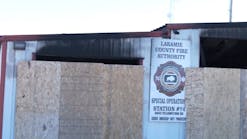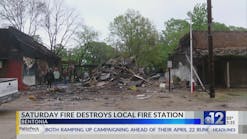Are you aware that you can think and relax at the same time? Just because you are enjoying a particular activity you are not precluded from exercising your brain cells. Heck, some of my best ideas have come in the midst of some really enjoyable endeavors on my part. This week's visit with you is another example of this phenomenon.
Being sort of semi-retired does have certain benefits my friends. I recently returned from a ten-day soiree to Florida. Part of the trip was work, however, the majority of my trip down south involved running away to join the circus. That is all part of being semi-retired. You get to go to neat places and combine the best parts of work and pleasure.
As I stated, you really never know when life's lessons will cause that light to come on in your brain. There are those times we get our ideas at work. That is what many of us are paid to do, so it should not seem amazing. However, they sometimes come to us when we are at play. That can be surprising, and rewarding, all at the same time. And occasionally these gems of wisdom come to us through the voices of our friends. So it was on my recent trip to Florida.
The work part involved an area of the emergency service world which is near and dear to my heart. My buddy Steve Austin and I were in Orlando, Florida assisting our friends at the National Fallen Firefighter's Foundation (NFFF). They were in town to hold their mini-summit on the topic of vehicle safety. We were asked to co-facilitate the session that covered issues dealing with highway safety.
Some really neat people came together to share their views on issues revolving around how to keep people safe when they are operating on the roadways of North America. We looked at such topics as:
- Incident management of highway operations
- Traffic control issues
- Fire police issues
- Public education
A great deal of good information was shared with the group. A report on our findings will be issued by the later this year. I will say though that a lot needs to be done in the area of public education. I will be speaking more on that topic in a later visit with you. However, there were a wide range of ideas generated during our brainstorming session. Our stated mission was to gather thoughts and ideas. That we did. Mission accomplished.
With the work in Orlando completed, I packed up and moved on to the next stage of my winter journey. I headed down to Sarasota for one of the most enjoyable highlights of my year. I got together with about 250 other circus music aficionados at the Windjammers Unlimited Circus Music Preservation Association.
For the better part of five days I returned to the days of yesteryear and played my tuba in the midst of a fine bunch of fellow circus music devotees. We have devoted ourselves to preserving a style of music which has all but disappeared from the modern circus genre.
In fact I believe that only one piece of the music we played was written after 1930. Hour after hour was spent rehearsing and recording the marches, two-steps, waltzes, gallops, and novelty numbers that were the stock in trade of circus in the good, old days.
It is also in that historic seashore city in Florida that some of the greatest memories in circus history were created. For you see Sarasota hosted the winter quarters of the Ringling Brothers, Barnum, and Bailey Circus: The Greatest Show on Earth. Today it is the home of the John and Mabel Ringling Museum, which now operates under the auspices of the Florida State University.
Sarasota is also the home a really special local attraction known as the Sailor Circus. What was once a vocational training program under the auspices of the Sarasota High School is now an active, youth oriented community undertaking supported by the Sarasota Police Athletic League (PAL).
The relationship between the Sailor Circus and the Windjammers dates back a number of years. It is our tradition to play traditional center-ring concert before the regular circus performance begins. Our group then provides a separate, fully staffed circus band to play the support music for the circus performance. It was at this year's circus performance that I received the inspiration to create this week's visit with you.
I cannot take all of the credit for this idea. A great deal of time was also spent during this past week in Sarasota with Ed Cleveland, a dear friend from my days with the International Society of Fire Service Instructors, and his charming wife Sonja. We had a number of interesting discussions on the future of the fire service. He also gave me a really neat tour of the area and showed me all of the fire stations within a ten mile radius of my hotel.
He and Sonja took me out to supper and then spent a couple of hours listening to our Friday evening rehearsal for the Sailor Circus performance. They then attended our annual memorial service on Saturday, and followed up on Sunday by attending the concert and the circus performance. I believe that I have found two new circus-music aficionados in Ed and Sonja.
It was at the circus that Ed and I began to discuss the life skills we saw being exhibited by the young people who were working in the show. It was a couple of words my from friend that led me to see the lessons that the young performers and their dedicated mentors were living out in the midst of their circus performers.
As we watched the teenaged performers running through a flying rope routine, it occurred to us that we were watching people who were extremely well-trained. I can only imagine the number of hours that each of these dedicated performers had devoted to learning the intricate flying maneuvers.
Let me also stress that the dedication was a two-way street. In addition to the many hours of practice which each performer had to undergo, I want you to ponder the number of hours of coaching and mentoring that each of the PAL adult mentors offered to their charges. Adult guidance, supervision, and examples are a critical element in the creation of a new generation within any field. It just happens that I had this lesson reinforced for me at the Sailor Circus.
We also were treated to an excellent example of the need for coordination in an organizational setting. The acts were scheduled in a given order, and as each act was performing the next act was gathering on deck so that there would be no delay in the sequencing of the performance. This came about as a result of a great deal of planning and practice.
The aerial act was the highlight of the afternoon. Five young performers ascended to the heights of the arena to take their positions. One young man took the central position and began his back and forth flying routine. One by one the young ladies leapt out to swing back and forth taking on the forces of gravity, and human nature.
As these young ladies flew through the air, released their grip on the trapeze bar, and flew out into mid air, they were displaying the ultimate example of trust. Having practiced many hours with their partners, they were confident that the young man would be there to grasp them at the appropriate instant.
I believe that it was the combination of training, practice, mentoring, and guided repetition that created this aura of trust that created the performance Ed and I witnessed. How else can you explain why a person would let go of a sure thing and fly out into mid-air? I say it was the certainty that their partner would be there for them that allowed this dangerous interaction to occur.
Let me share the magic moment which occurred just before the aerialists took to the skies. Their coach called them together. They huddled up around the coach and received their last-minute instructions. They were tightly entwined in a beautiful example of teamwork, trust, and personal motivation.
These were people who were about to place their lives in each other's hands. They hugged tightly and then moved off to take care of business. It was touching. It was also something that should be emulated in our world. I recently wrote of the difference between leaders and managers. The people coaching these young people were not managers. They were leading their youthful charges into a series of challenging, and sometimes dangerous activities. They were coaching them in the use of some really neat physical skills, as well as some vital interpersonal skills.
Let me suggest that each of you who wish to be a leader in your organization think about adopting these "circus" behaviors. I shall list what I saw and offer you my suggestions for the future success of your organization:
- Enthusiastic
- Accepting of others
- Present for others
- Useful to others
The people I saw performing in that circus were really enthusiastic, as were their coaches and supporters. I saw a great deal of interaction between the coaches and performers. Whenever one of the young people seemed to need some support, a coach appeared and took care of business. These mentors seemed always ready to set the example for their people.
One of the coaches was a retired circus aerial performer. He was not a young man. However, he seemed to be bubbling over with enthusiasm for his work. He was constantly moving and continually offering advice. I was truly impressed. He and the other coaches and advisors portrayed the skills and actions that Favreau presented to the fire service back in 1973:
- Train as a team
- Support the individual
- Nurture the group
- Come to know them as individual human beings
- Cultivate responsibility among your people
- Know the capabilities of your people
- Operate within those identified competencies
We in the fire service seem to think that our world is a special place. Far too many of us seem to believe that we do not need to abide by the same rules as the rest of society. Given the number of real boobs in positions of leadership, this must be the case. Sorry, friends, we have to wake up and smell the coffee.
Ed Cleveland and I saw a special example of true leadership in Sarasota. In speaking with one of the adult volunteers after the show, I was impressed with his enthusiasm and dedication. He was selling tee shirts and bragging about the Police Athletic League. He mentioned that there were now 168 young people signed up for the circus.
I am betting that this group has found something good to pass on to the young people of their community. I offer their example to you as a starting point for improvement in your fire department. Never think for a single moment that you cannot change, or that you are too old or too good to learn from the actions of others, particularly young people.
The Police Athletic League has just kicked off a major fund-raising campaign to gather the funds for renovating their circus facility. If you want to help some really neat people guide the youth of their community, you can send a little something along to the PAL Sailor Circus Renovation Capital Campaign at 2075 Bahia Vista Street, Sarasota, Florida 34239. I will be putting my check into the mail today. Take care, stay safe, and never stop working to get better at what you do.





